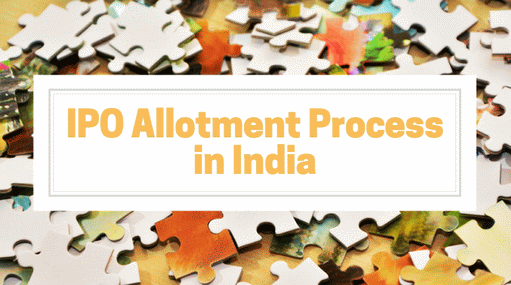India is home to two of the biggest stock exchanges in the world on certain parameters. NSE recently made highlights as it became the largest exchange for derivatives trading by volume. On the other hand, BSE has long held the distinction (although somewhat dubious) of most number of listed companies. As more and more companies keep launching their IPOs, it is important to understand the IPO process in India.
The IPO process in India is quite elaborative and rightly so. It is after all an important event for companies, regulators and investors. Becoming a listed entity changes life for a company’s employees and promoters. A listed company has to make regular disclosures to stock exchanges and regulators while also keeping investors happy through regular release of results. Despite these time-consuming activities, IPO is a coveted milestone in every company’s journey. There are 7 essential steps involved in the listing process through an IPO.
Steps in IPO process in India
#1 Hire an investment bank (lead manager)

Once a company decides that it wants to go public, it needs to hire investment banks which are market intermediaries recognized by regulators. The selection of investment banks is a function of several factors like their industry expertise and reputation, distribution capabilities and prior relationship with the company, if any.
The mandate for investment banks is to find the best valuation of the company and get investors to buy the IPO. To ensure the success of IPOs, investment banks are required to underwrite the issue, either themselves or through a third party for a fee. After going through the company’s financial statements, industry dynamics and risk appetite among investors, investment banks advise their clients on the IPO.
For regular IPOs, no single investment bank would like to assume the full risk and thus, they usually form a syndicate which includes other merchant banks. The bank leading the pack is known as lead manager.
#2 Prepare draft prospectus and submit with SEBI
When all the three parties (issuing company, investment bank, underwriter) agree on the broad contours of the IPO, they need to prepare a draft prospectus and submit the same with SEBI. The draft red herring prospectus (DRHP) is a document covering extensive details about the company’s business so far, its plans for the future and the competitive scenario in its industry. The draft prospectus also outlines how the company is planning to use the funds generated from IPO.
The regulator’s job is to vet the DRHP filed by the company and it may ask follow-up questions as well as demand more disclosures to be made. Once the regulator is satisfied with the information provided by the company, it issues “observation” which is another way of saying that the IPO has got regulatory approval.
#3 Road shows (‘dog and pony’ shows)
Now that the issue has been approved by the regulator, company management and lead managers travel extensively across the country to market the IPO to potential investors which are mostly institutional investors. Generally 50% shares in mainboard IPOs are reserved for qualified institutional investors (QIBs), making these investors critical to ensure success of the IPO.
This road show phase lasts for at least couple of weeks and may take longer if more investors are required to be roped in due to size or attractiveness of the issue. In Indian context, road shows may start even before the IPO is approved by the regulator.
It is important to highlight that this is an integral step in IPO process in India as the book- building system we follow in IPOs ensures allotment at same price to everyone (know more about the IPO allotment process). This is radically different from the Dutch auction system which Google used in 2004 for its IPO, effectively bypassing the investment banks and the road shows. Dutch auction system favours highest bidders and shares are allotted at multiple price points.
#4 IPO Process: RHP and Pricing
When the company files draft prospectus, it is not required to disclose how the issue will be priced and when it will be launched. Once the issue gets regulatory approvals and the company is ready to launch the IPO, it files an updated version of the prospectus.
This version is called red herring prospectus (RHP). An RHP contains updated financial information as well as the dates of the IPO. However, this document is also devoid of issue pricing. An IPO’s price band, discount to retail investors and employees and the minimum bid lot size are decided couple of days before the IPO.
#5 IPO Process in India: Bidding through book-building
After finalizing pricing, the IPO is made available to investors for bidding. For mainboard IPOs, it is usually a price range while for smaller issues it is a fixed price band. Typically, IPOs are kept open for at least 3 working days and it can be extended in case of undersubscription. An IPO can be kept open for a maximum of 10 days.

The IPO bidding framework in India allows online as well as offline applications for public offers. Nevertheless, efforts are underway by SEBI to reduce offline applications. At the same time, online facilities such as UPI and ASBA applications are gaining prominence.
#6 IPO Allotment

Upon completion of IPO bidding, allotment is the next important step and the responsibility of this phase is with the issue registrar. Even in the case of a successful IPO, there are different possibilities and accordingly, the number of shares allotted may be different. Here is more on the logic behind IPO allotment.
Since stock trading is mandatorily in demat form in India, the registrar has to ensure credit of shares in the respective demat accounts of successful applicants.
Read Also: 5 tips to increase IPO allotment chances
#7 Listing and lock-in periods
In India, the IPO process culminates in the form of listing of the company on stock exchange. With the listing in the secondary market, successful applicants can sell their shares on stock exchanges and new investors can purchase. However, certain shareholders such as anchor investors and promoters are subject to lock-in periods which means they cannot sell their shares immediately after listing.
Anchor investors are subject to a lock-in period of 30 days from the date of allotment. The lock-in is more stringent for promoters. According to SEBI regulations, 20% of the company’s fully diluted post-offer equity share capital held by promoters is locked-in for a period of three years from the date of allotment.




































